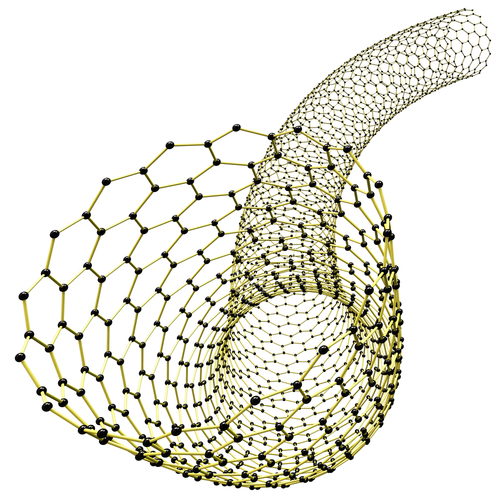Lung Injury from Carbon Nanotubes Reduced With Aluminum Coating
Written by |

 Although multi walled carbon nanotubes (CNTs) are all the rage in product development, finding applications in sporting goods, electronic devices, and many other products, they pose a potential health hazard similar to asbestos. However, Dr. James Bonner, a professor at North Carolina State University, found a way to reduce the risk of pulmonary fibrosis.
Although multi walled carbon nanotubes (CNTs) are all the rage in product development, finding applications in sporting goods, electronic devices, and many other products, they pose a potential health hazard similar to asbestos. However, Dr. James Bonner, a professor at North Carolina State University, found a way to reduce the risk of pulmonary fibrosis.
“This could be an important finding in the larger field of work that aims to predict and prevent future diseases associated with engineered nanomaterials,” said Dr. Bonner in a news release from the university. “Our goal is to find ways to make sure that carbon nanotubes don’t become the next asbestos.”
Dr. Bonner’s work, which was funded by the National Institute of Environmental Health Sciences, investigated how a coating of aluminum oxide around multiwalled CNTs lessens markers of inflammation both in vitro and in vivo.
“Because multiwalled CNTs are increasingly used in a wide variety of products, it seems likely that humans will be exposed to them at some point,” said Dr. Bonner. “That means it’s important for us to understand these materials and the potential risk they pose to human health. The more we know, the better we’ll be able to engineer safer materials.”
As principal investigator, Dr. Bonner published the lessons learned during investigations in the journal PLOS One under the title “Atomic Layer Deposition Coating of Carbon Nanotubes with Aluminum Oxide Alters Pro-Fibrogenic Cytokine Expression by Human Mononuclear Phagocytes In Vitro and Reduces Lung Fibrosis in Mice In Vivo.”
[adrotate group=”3″]
For the study, Dr. Bonner’s research team assessed pro-fibrogenic cytokine expression of human macrophages and monocytes exposed to coated or uncoated multiwalled CNTs. There was a reduction in protein levels of IL-6, TNF, and osteopontin but an increase in IL-1β secretion. When mice were exposed to inhaled multiwalled CNTs, they developed less fibrosis when the tubes were coated rather than uncoated. However, the coating did not prevent fibrosis from developing. Additionally, protein levels of all four cytokines (IL-6, TNF, osteopontin, and IL-1β) was enhanced in mice treated with uncoated mutliwalled CNTs relative to mice treated with coated multiwalled CNTs.
“The aluminum oxide coating doesn’t eliminate health risks related to multiwalled CNTs, but it does lower them,” concluded Dr. Bonner.






